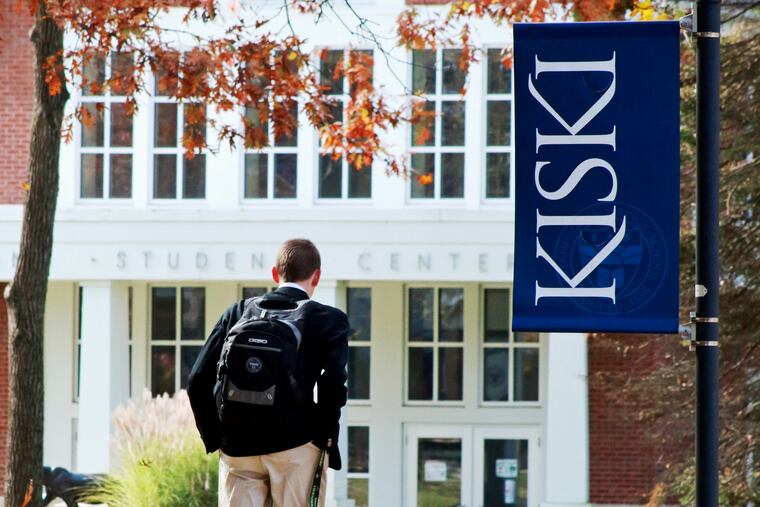Pennsylvania schools look to a ‘reset’ to solve tuition crisis | Opinion
The concept is simple: Cut tuition, and make up lost revenue by growing enrollment and decreasing financial aid costs.

In recent years, a growing number of colleges have addressed soaring educational prices with an innovative strategy. It’s called a “tuition reset.” The concept is simple: Reduce tuition significantly, and make up the lost revenue by growing enrollment and decreasing financial aid costs.
Since 2010, dozens of colleges have executed tuition resets, according to information from the Integrated Postsecondary Education Data System. This includes several schools that have recently announced reset plans for 2020.
On October 2, we at The Kiski School, an all-boys boarding school near Pittsburgh, are joining this effort. As Kiski’s headmaster, I’m well-acquainted with the financial challenges associated with our industry’s defective tuition model.
The reset solution represents a deliberate shift away from the high-cost-high-aid model that has most colleges offering deep discounts on hyper-inflated tuition rates through financial aid. A recent survey from the National Association of College and University Business Officers suggested that the average private college discount rate is 52%. Compounded over time, the discount on “sticker price” tuition has grown larger and larger as schools have gotten swept up in this practice.
As a result, affordability has become a major issue for college students and their families. According to a 2018 Sallie Mae report, 65% of students eliminate colleges in their selection process based on published tuition price without any further research. A tuition reset has proven an effective strategy to address this affordability hurdle.
When the reset is well-executed, the impact can be dramatic. Rosemont College, a small liberal arts college in Bryn Mawr, is a prime example.
In 2015, Rosemont cut its tuition by a dramatic 43%. It was a risky move, but one that paid off. The year after the reset was announced, applications increased by 64%.
Rosemont accomplished two goals with their reset. They reached more middle-income families who previously thought they couldn’t afford tuition, and they implemented a much more transparent pricing model. Rosemont’s president, Dr. Sharon Hirsh, stated: “College tuition has become an artificial sticker price that most students do not end up paying. Instead, colleges discount the price through a package of grants and scholarships, which are nothing more than discounts off of the sticker price.”
After Rosemont’s reset, La Salle University announced plans to reduce its tuition by 29%. Speaking about this initiative, La Salle President Colleen Hanycz said: “We cannot continue to assume that this issue will fix itself someday, somehow — the model for higher education is broken.”
The same is true for tuition at private elementary and second schools. Over the past decade, the average tuition at private schools has increased by around 50%, based on data from the National Association of Independent Schools.
With costs spiraling upward, Montgomery School, a PreK-8 private school in Chester Springs, stepped forward last spring to announce a tuition reduction initiative called “Excellence Within Reach.” The school has explained their decision as stemming from the fact that “independent school tuitions have reached an all-time high, forcing many families out of the private-education marketplace.”
Rosemont, La Salle, and Montgomery are inspiring change beyond the Philadelphia area.
After a great deal of planning and analysis, our school recently announced a tuition reset for next year, with a tuition reduction of 21%.
At our new tuition, we anticipate a modest increase in enrollment, which will offset some of the income forfeited by reducing our price. But Kiski’s reset really represents a move toward a philanthropy-centered approach with plans to raise money for endowed and operational scholarships. Coupled with a continued commitment to need-based assistance, we hope to offer better affordability and a more straight-forward approach to pricing.
In 2017, Harvard Business School’s Clayton Christensen made waves when he predicted that “50 percent of the 4,000 colleges and universities in the U.S. will be bankrupt in 10 to 15 years.” Time will tell. In the meantime, I suspect we’ll see a growing number of tuition resets at schools trying to address this challenge and be more accessible to middle-income families.
Christopher Brueningsen has been a private school educator for 29 years and since 2002 headmaster of The Kiski School, an all-boys boarding school in Westmoreland County, PA.